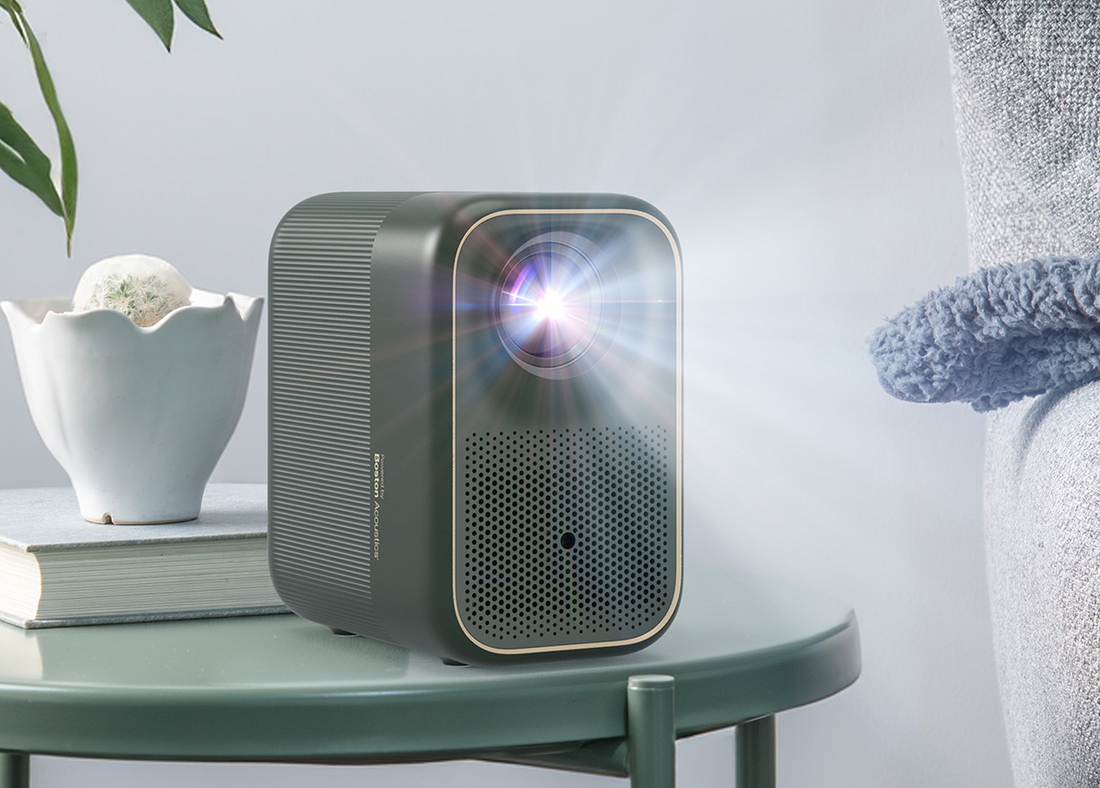Understanding Ratios: How Throw Ratio, Contrast Ratio, and Aspect Ratio Affect Viewing

There’s a relationship that exists deep within the inner workings of a projector. It’s a special marriage between three parties who bear the same last name and work together to bring the magic we’ve come to know as the big screen to life. Throw ratio, contrast ratio, and aspect ratio are all important specifications to consider when choosing a projector, and they each have different effects on the viewing experience.
We’ll be taking a closer look at the members of the Ratio family to give you a better understanding of the importance of these specifications, and how they can affect the performance of your Xming Page One in different spaces.
Throw Ratio and Aspect Ratio: A Symphony of Distance and Shape
These two are almost the same, but not quite. Playing around with these two specifications is how you get your projector to display a perfect fit for your screen. Let’s break it down.
Throw Ratio
Throw ratio refers to the distance between the projector and the screen in relation to the size of the projected image.
Projectors with a high throw ratio, also known as long throw projectors, need to be placed further away from the screen to achieve the desired screen size. A lower throw ratio means the projector can produce a larger image from a shorter distance. These are known as short throw or ultra-short throw projectors.
This specification is crucial for determining the type of projector you need in different spaces, as well as the placement of the projector in that space. The Xming Page One has a relatively low throw ratio of 1.25:1, however, this isn’t low enough to categorize it as an ultra-short throw projector like the Formovie THEATER. The Xming Page One is best suited for rooms where there can be some distance between the projector and the screen, but not too much.
You can use the throw ratio to calculate the perfect distance for your projector’s placement before setting it up.
Aspect Ratio
In a situation where you’ve played around with the throw ratio, moved the projector back and forth multiple times attempting to get the image to fit perfectly within the borders of the screen and failed, you need to start toggling with the aspect ratio.
The aspect ratio speaks more to the shape of the projected image, and it’s the specification that helps you get the perfect rectangle to fit your screen. This is a spec that’s not limited to the projector, and you’ve probably fidgeted with it while watching movies on your phone or TV. The perfect aspect ratio is different for different types of content and different shaped screens.
The most common aspect ratios on a projector are 4:3 (standard definition), 16:9 (widescreen or HDTV), and 16:10 (common in business projectors). When the aspect ratio of your content doesn’t match the one you’ve set on your projector or screen, black bars will appear either at the top and bottom or on either side of the screen. Rtings explains that viewing a 21:9 movie on a standard 16:9 widescreen TV results in black bars at the top and bottom, as shown in the image below.

Courtesy of Rtings
Add Contrast to Enhance Shadows and Colors
Contrast ratio, often overshadowed by throw and aspect ratios, plays a pivotal role in the visual richness and depth of projector displays. While throw and aspect ratios deal with dimensions and proportions, contrast ratio delves into the realm of light and shadow, enhancing colors and defining the subtle visual notes in each scene.
The contrast ratio describes the difference between the whitest white and the deepest black tone that the projector can display. In the case of the Xming Page One that has a 2000:1 contrast ratio, this means that the whitest part of the display is 2000 times brighter than the darkest part.
This is not a specification that you can fidget around with. However, playing around with the brightness of the room, and the type of screen you choose to use, can have an effect on it.
The Golden Ratio to Your Xming Page One
Like members of a closely-knit family, each specification plays a unique role, working in harmony to bring the cinematic potential of the Xming Page One to life.
The throw ratio ensures that the projector finds its perfect place in any space, delivering an immersive viewing experience tailored to the dimensions of the screen. The aspect ratio molds the image to fit seamlessly within the confines of our visual canvas. And the contrast ratio, the unsung hero of the trio, adds depth and richness to every frame.
Understanding these specifications empowers you with the knowledge to unlock the full potential of the Xming Page One projector, so you can create lasting memories in any space you decide to set up.

